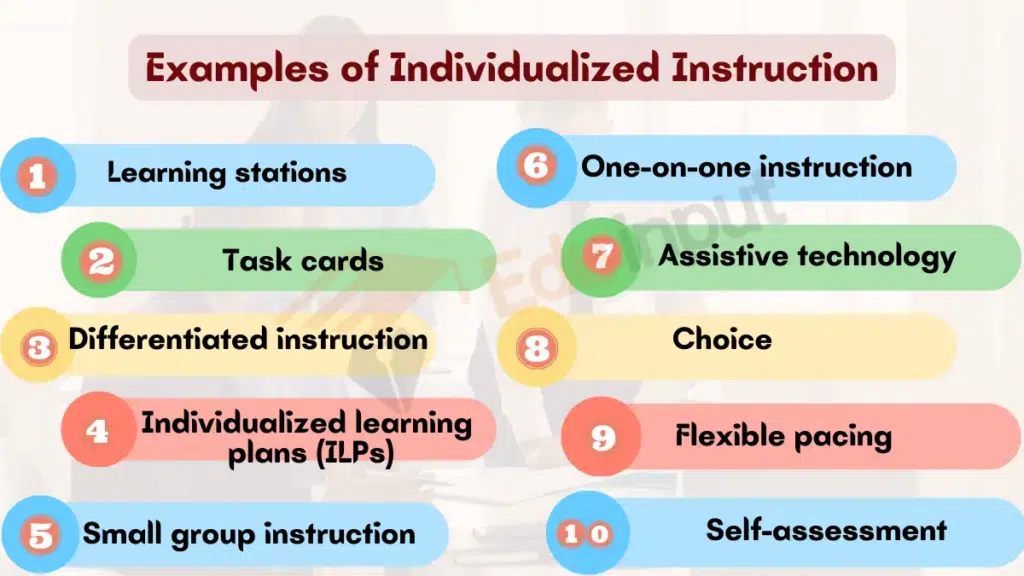10 Examples of Individualized Instruction
Individualized instruction is a teaching approach that tailors instruction to the specific needs of each student.
It takes into account the student’s learning style, interests, prior knowledge, and pace of learning. Individualized instruction is used in any subject area and with students of all ages and abilities.
Here are 10 examples of individualized instruction.
Examples of Individualized Instruction

1: Learning stations
Learning stations are different areas of the classroom where students can work on different activities related to the same lesson. This allows students to choose the activities that best suit their learning style and interests.
For example, in a math class, students might rotate between a station where they watch a video tutorial, a station where they work on practice problems with a partner, and a station where they play a math game.
2: Task cards
Task cards are self-paced activities that students can complete individually or in small groups. Task cards can be used to introduce new concepts, practice skills, or assess student learning.
For example, in a science class, students might use task cards to learn about the different parts of a plant cell.
3: Differentiated instruction
Differentiated instruction is a teaching approach that provides different levels of support and challenge to students based on their individual needs.
For example, in a reading class, the teacher might provide a student who is struggling with decoding with a simpler text to read than a student who is reading at grade level.
4: Individualized learning plans (ILPs)
ILPs are written documents that outline a student’s individual academic goals and the steps that will be taken to achieve those goals.
ILPs are developed in collaboration with the student, parents, and teachers.
5: Small group instruction
Small group instruction allows teachers to provide more focused attention to a group of students who have similar needs.
For example, in a math class, the teacher might work with a small group of students who are struggling with multiplication.
6: One-on-one instruction
One-on-one instruction is the most individualized form of instruction. It allows teachers to tailor instruction to the specific needs of a single student.
For example, in a writing class, the teacher might work with a student one-on-one to help them revise their essay.
7: Assistive technology
Assistive technology is any tool or device that helps students with disabilities learn and participate in the classroom.
For example, a student with a visual impairment might use a screen reader to access digital content.
8: Choice
Giving student’s choices about what they learn and how they learn can help to increase motivation and engagement.
For example, in a social studies class, students might be given the choice of writing a research paper on a historical topic or creating a presentation on a current event.
9: Flexible pacing
Flexible pacing allows students to learn at their own pace. This is especially important for students who are struggling with a particular concept or who are ahead of their peers.
For example, in a math class, a student who is struggling with multiplication might be given extra time to complete assignments.
10: Self-assessment
Self-assessment allows students to reflect on their own learning and identify areas where they need to improve. For example, in an English class, students might be asked to complete a self-assessment after writing an essay.
Individualized instruction is an important way to ensure that all students have the opportunity to succeed.
By tailoring instruction to the specific needs of each student, teachers can help students to reach their full potential.



Leave a Reply